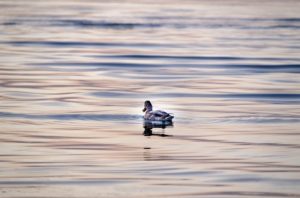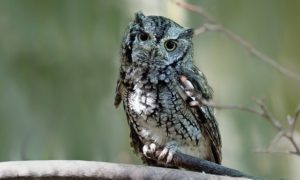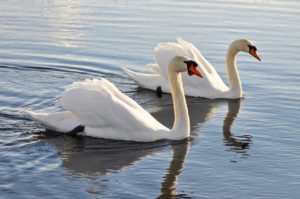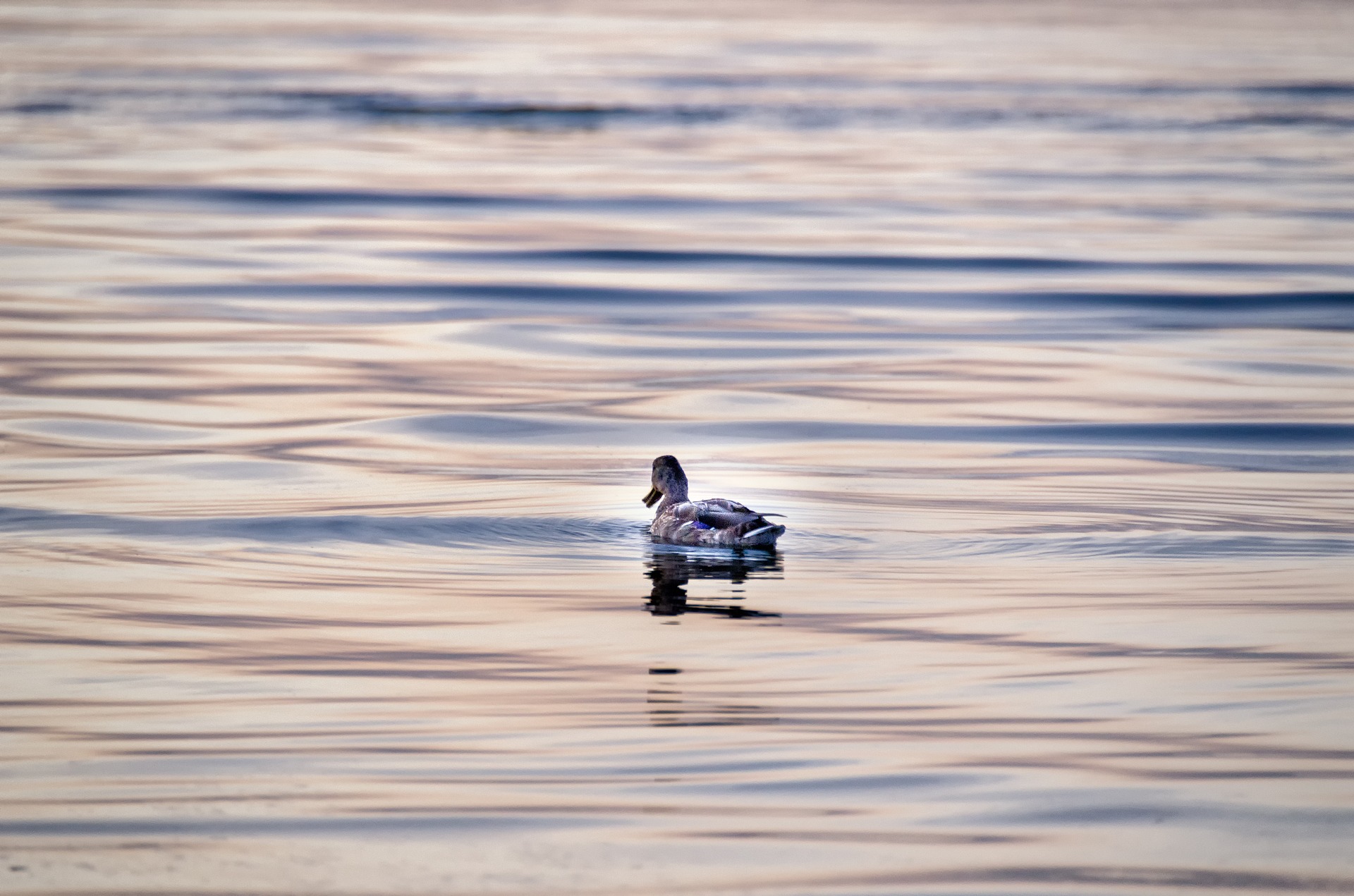Fall and winter hikes through Yarmouth’s conservation areas provide an underappreciated view of the town’s natural beauty. The trails are quieter, marsh grasses turn to shades of gold, and fallen leaves rustle underfoot. The quiet season is also a sublime time to view winter migratory birds, which leave the frozen, snow-covered terrain in Canada to seek food and shelter in Cape Cod’s comparatively balmy climate.

Yarmouth has roughly 1,800 acres of conservation land scattered around the town, with trails that ramble through woodlands, along kettle ponds and across salt marshes. The varied topography provides multiple types of wildlife habitat, which make great places for observing nature. Bird lovers walking these trails in the late fall and winter months might spy sea ducks, loons, and other cold-weather visitors, along with the many species that linger year round on Cape Cod.
Most people think that birding is only done during June, July and August, and the annual bird migration is just an exodus of summer dwellers, says Phil Kyle, naturalist, birding guide and former columnist for the Cape Cod Times. But as the summer birds retreat, new species arrive from the north, he explains. These winter migrants include some 15 to 20 species of sea ducks, which aren’t found on Cape Cod during warmer months.
Callery Darling Conservation Area
One of the best areas for spotting both waterfowl and upland birds during the chilly months is the Callery Darling Conservation Area. Located north of Route 6A, it stretches from Homers Dock Road to the salt marshes west of Center Street. Callery Darling is one of the town’s most ecologically diverse conservation areas, with overgrown cranberry bogs, abandoned farmlands, maple swamps, and salt marshes.

The varied habitat boasts an extensive list of unusual birds that could be seen if you’re quiet, patient, and lucky. The list includes Virginia Rails, Screech Owls, Fox Sparrows, Eastern Towhee, Green-winged Teal, Hermit Thrush, Gray Catbird, Rusty Blackbird, Northern Harrier, Sanderling, Dunlin, and Tree Sparrows, Kyle said.
A highlight for all who hike the trails at Callery Darling is the 800-foot Bass Hole Boardwalk, which crosses tidal creeks and offers inspiring views of the salt marshes, especially at sunset.
Meadowbrook Conservation Area
An easily accessible hiking area – and a superb place for viewing birds – is Meadowbrook Conservation Area, overlooking Swan Pond. In addition to Mute Swans, you might see Kingfishers, Gadwalls, Hooded Mergansers, American Wigeon, and various species of Scaup, Kyle says.
The terrain at Meadowbrook consists of brackish marsh, salt marsh, and relic Atlantic white cedar swamp fronting on Swan Pond. A 310-foot boardwalk leads from the parking area to the north shore of Swan Pond.
The best spots for spying winter birds is east of the boardwalk, Kyle advises.
Dennis Pond Conservation Area
Dennis Pond, if it’s not frozen, is another good spot to view water birds, including loons. You might also glimpse lingering cormorants, Bufflehead Ducks and Scaup, along with resident inland birds along the easy-walking trails adjacent to the railroad tracks, Kyle says.
The main trail at Dennis Pond Conservation Area is less than a mile long (about 3,285 feet) winding through varied woodlands. There’s also a side trail that follows closely along the shoreline and rejoins the main trail.
South Shore Drive
You can also spot sea ducks and other marine birds along Yarmouth’s beaches, says Kyle. So if long walks along the churning shoreline bring comfort to the winter in your soul, pack a pair of binoculars and head to South Shore drive. Yes, there are hotels, homes and cottages to the north, but there’s also the beauty of Nantucket Sound to the south, with salty southwest winds blowing off the water.

The invigorating shoreline trek will take you about 1.3 miles from Bass River Beach (aka Smuggler’s Beach) along South Shore Drive to Thacher Park Beach. There’s a sidewalk and easy parking. Now that summer has gone, you’ll find plenty of empty spaces at the beachfront lots.
Plenty More Trails to Explore
Yarmouth has many other conservation areas, with trails and natural beauty for autumn and winter hikes. If you’re feeling ambitious, try the Bud Carter Memorial Trail, which winds through 300 acres of conservation land and is home to Yarmouth’s highest elevation – 118 feet above sea level. On a clear day you can see all the way to Manomet Point in Plymouth. Walking is also a little more trying on these trails, with some loose rocks, narrow paths, and unmarked side trails. (Note: The main trail is marked in red, and loop trails to the north and south are designated with orange markers.)
Horse Pond Conservation Area has 400 acres, with a main trail that follows the northern perimeters of Horse Pond. You’ll also find numerous spurs, loops and connectors to other trail systems.
Sandy Pond Conservation Area surrounds Sandy Pond, a 12-acre kettle pond with steep slopes and a depth of roughly 35 feet. A nature trail leads around the pond and connects to other trails to the north, west, and east. The adjoining trails can lead for miles, so don’t wander too far.

Thatcher Shore Conservation Area consists of mostly salt marsh with a short trail through wooded thicket. The marsh end of the trail offers a chance to see numerous wading birds, along with ospreys and other raptors flying overhead. This is also a good spot to test your vision on a clear day. Look northward and see if you can find the needle pointing upward from the horizon. It’s Pilgrim Monument in Provincetown.
Raymond J. Syrjala Conservation Area has 15 acres, with a 3,500-foot looping trail that winds through wetlands. A man-made reservoir to the east was once used to store water for cranberry bogs that are now abandoned and overgrown.
Find more walks – along with trail rules and additional details about the places we’ve listed here – by downloading maps of Yarmouth’s conservation areas and trails. Print out the maps or send them to your mobile phone before you set out on your adventure.
What to Bring on your Walk

Weather conditions can change rapidly during the fall and winter months, and the best way to dress for change is to wear layers. A water-repellent windbreaker over a fleece vest is a good option, because you can unzip if it’s warm or bundle up when a cold wind whips in. Also bring along some water, a snack, and a map of the trail areas. Keep in mind that deer ticks are active on warm days in autumn, and you can still catch poison ivy from contacting the purplish-gray stems and telltale white berries.
If you’re planning to watch for birds, don’t forget the binoculars. Kyle suggests wearing earth tones and keeping relatively quiet as you make your way through the woods. Loud noises and colorful clothing will alert birds to your presence, and they may fly away before you get a chance to see them.
Be Careful of Hunters
One final but important safety note: Yarmouth allows hunting on some of its conservation land, so hikers should pay attention to signs during hunting season and be aware that you may be sharing the woods with hunters. Some tips:
- Avoid hiking at dusk and dawn, which are the most popular times for hunting. Wooded areas are darker at those times, so you might not be seen as easily.
- If you’re hiking in an area that is open to hunting, forget the earth tones. Instead, go with hunter orange or another bright color. The American Hiking Association suggests wearing a bright orange knit cap. Also remember to put a brightly colored vest or coat on your dog. Talking while walking is also a good way to remain noticeable.
- Don’t wander off the main trails. Hunters tend to follow smaller game trails and are less likely to be encountered on main walkways.
FInd more information about hunting in Yarmouth here: https://www.yarmouth.ma.us/174/Hunting.
Andy Tomolonis is a nonfiction author, travel writer and multimedia journalist.

